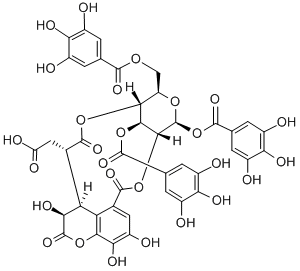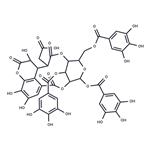Chebulinic acid, an ellagitannin found commonly in Terminalia chebula, has been used extensively to treat diverse eras of ailments traditionally. It was also present in Phyllanthus emblica, Dimocarpus longan, Terminalia catappa, Terminalia parviflora, Terminalia macroptera, Lumnttzera racemosa, and Dendrophthoe falcate and has been used extensively in the traditional Indian system of medicine. It was first isolated by Fridolin in the year 1884[1].
Chebulinic acid is polyphenol th at has shown antihypertensive, and anti-oxidant properties. Its antihypertensive effects may be due to decreased cardiac output from reduced left ventricular contraction.


